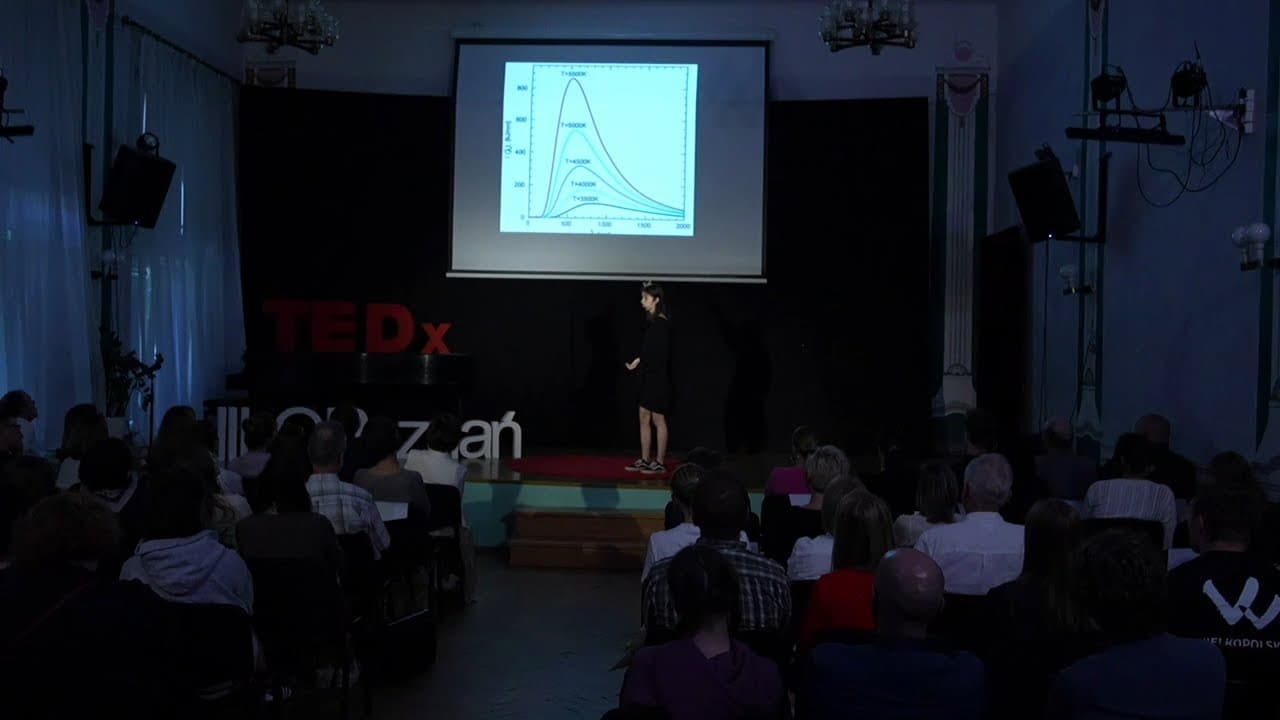Olbrzymy, cebule, wybuchy i zombie - opowieść o życiu gwiazd | Zuzanna Borucka | TEDxIILOPoznań
10 Sep 2024 (8 months ago)

The Building Blocks of Matter
- Atoms are the smallest building blocks of matter and are made up of a nucleus and electrons. Atoms can differ in structure and mass, leading to different elements. (31s)
- Gravity is a force that causes objects to attract each other. The closer and heavier objects are, the stronger the gravitational pull between them. (2m2s)
The Formation of Stars
- Stars are formed when a large number of atoms are pulled together by gravity. The immense pressure and heat at the core of a star allow for nuclear fusion to occur. (2m50s)
- In the core of a star, as external layers contract and decrease the volume containing atoms, the atoms collide and fuse, a process called nuclear fusion. (7m5s)
Temperature and Atomic Motion
- Temperature, in physics, is defined by the average speed of particles; the faster the particles move, the higher the temperature. (4m48s)
- When the volume containing atoms decreases, the atoms speed up, similar to how a tennis ball's speed increases after being hit by a racket. (5m14s)
Stellar Color and Temperature
- The color a star appears to be is related to the length of the light waves it emits, with longer wavelengths appearing red and shorter wavelengths appearing blue. (8m30s)
- The temperature of a star's surface influences the wavelengths of light it emits, with hotter stars emitting shorter wavelengths. (9m23s)
Stellar Evolution and Fusion
- When the core temperature of a star surpasses a certain threshold, helium atoms, which are produced from hydrogen fusion, can fuse into carbon, creating a second source of energy within the star. (11m39s)
- As a star expands, the outer layers cool down, causing the star's color to shift from blue to yellow or orange. (13m2s)
- As a star expands, it develops layers, with each layer producing a different element through fusion. (13m26s)
- When iron forms in the core of a star, it signals the star's impending death because iron absorbs energy during fusion instead of releasing it. (14m36s)
Stellar Death and Element Creation
- When a star explodes, the new elements created in the explosion, such as gold and uranium, are scattered throughout space. (17m11s)
- The remaining iron core of the star is incredibly dense, with a radius of only 20 km, and emits dangerous gamma radiation. (17m47s)
- The heaviest elements, like gold, uranium, and polonium, are created when these dense star cores collide with each other. (19m9s)